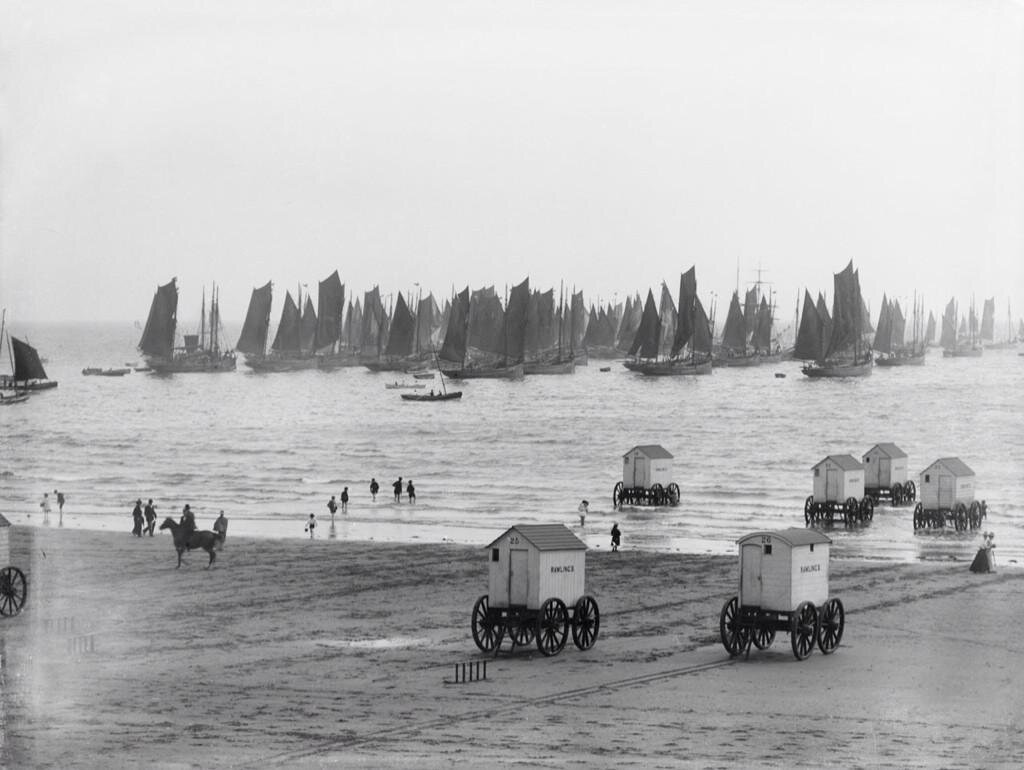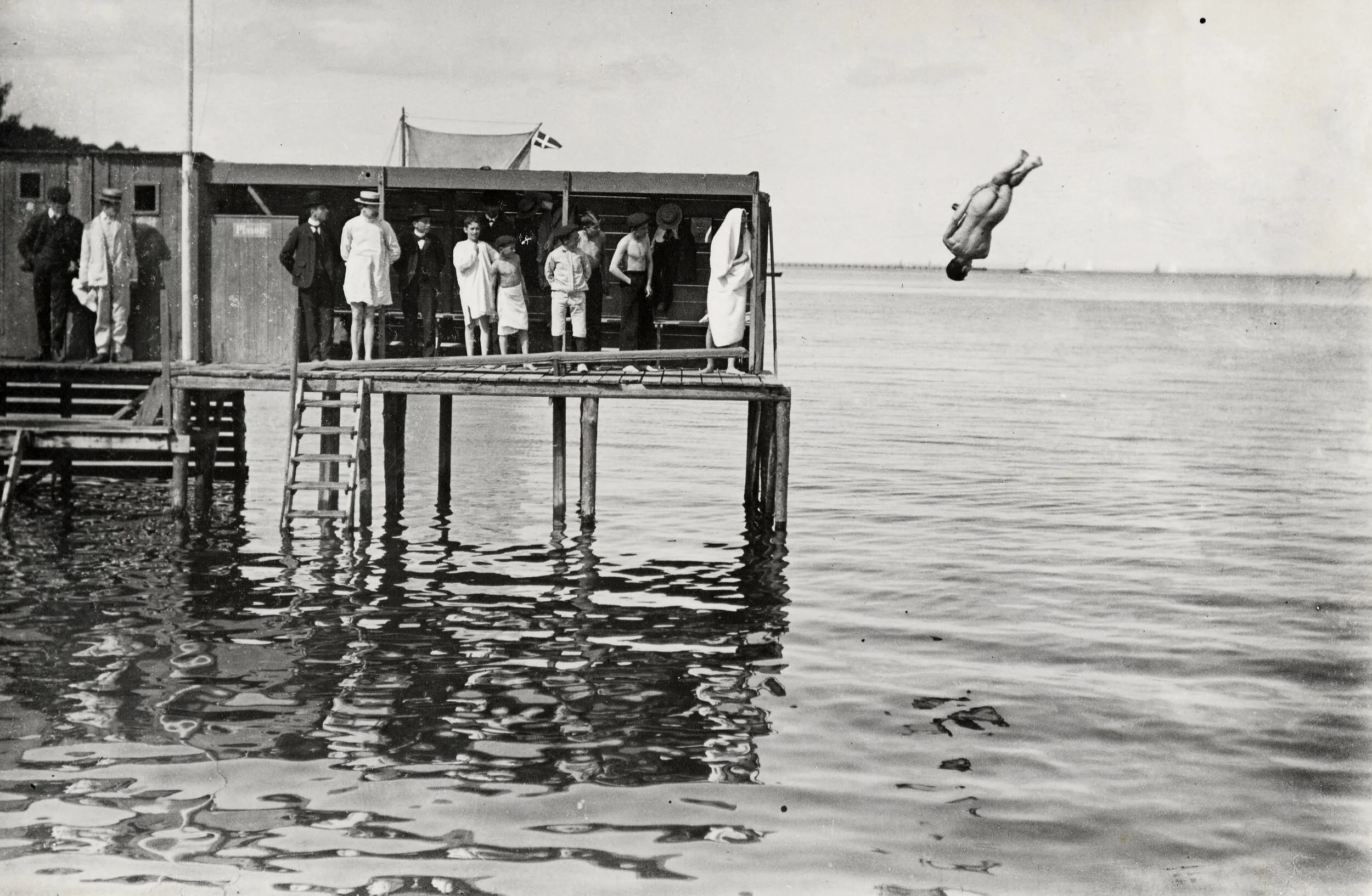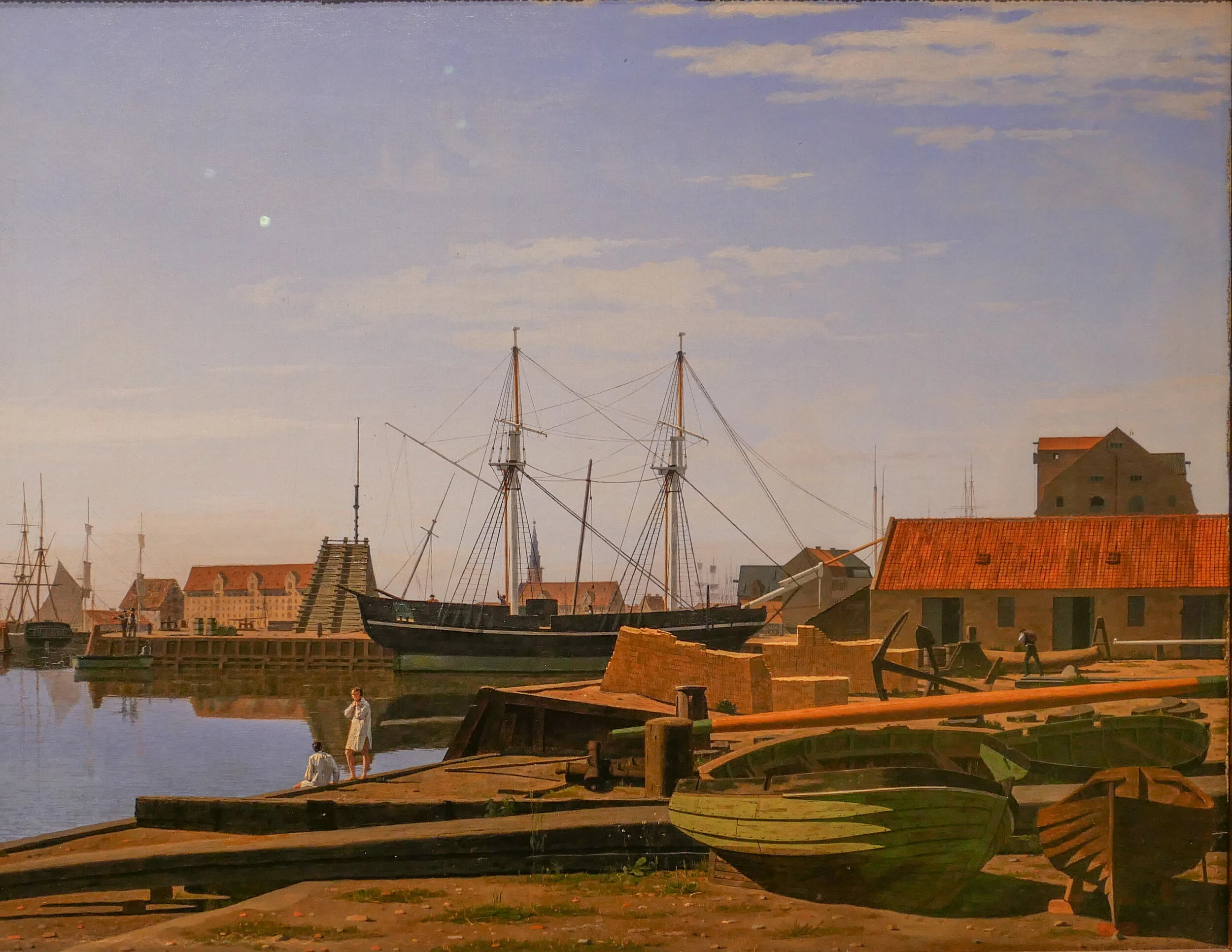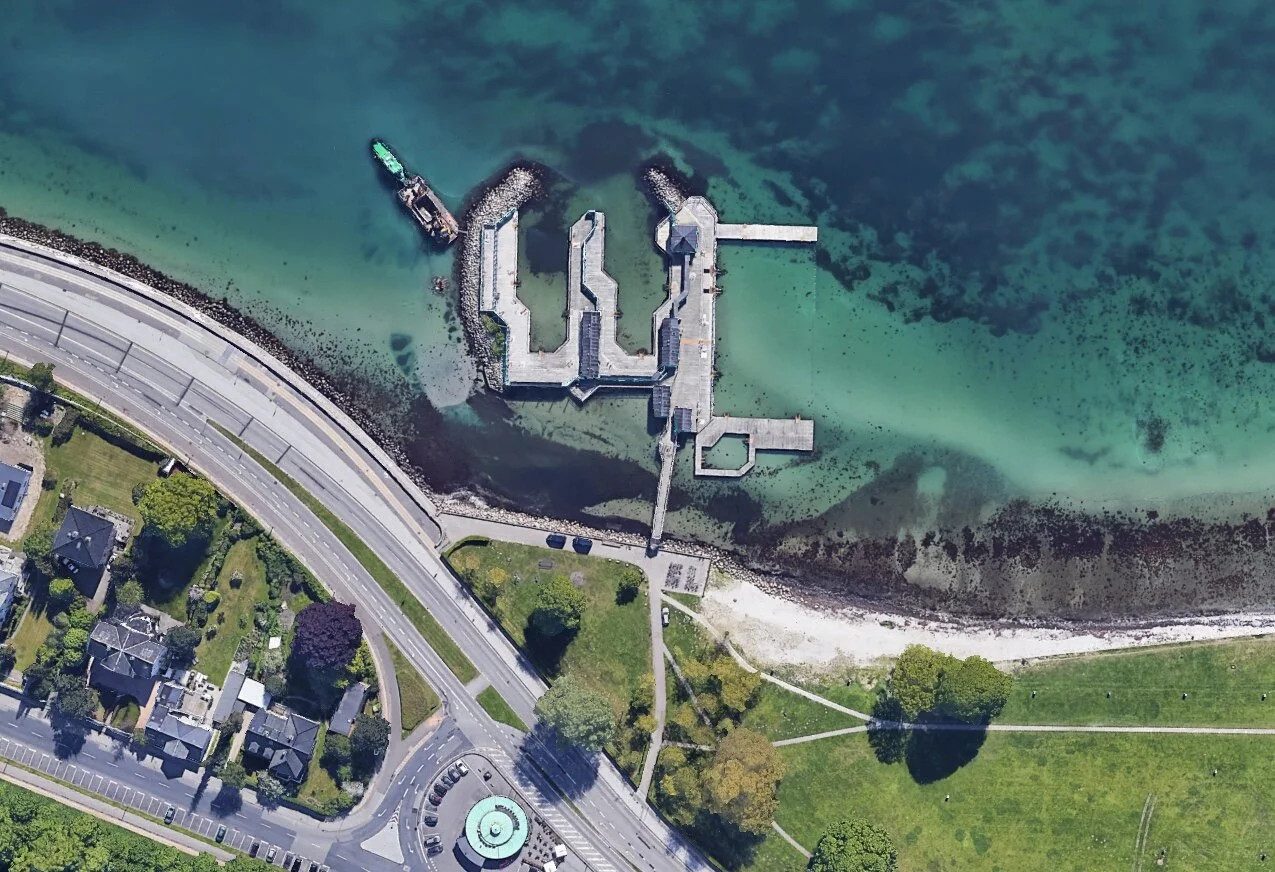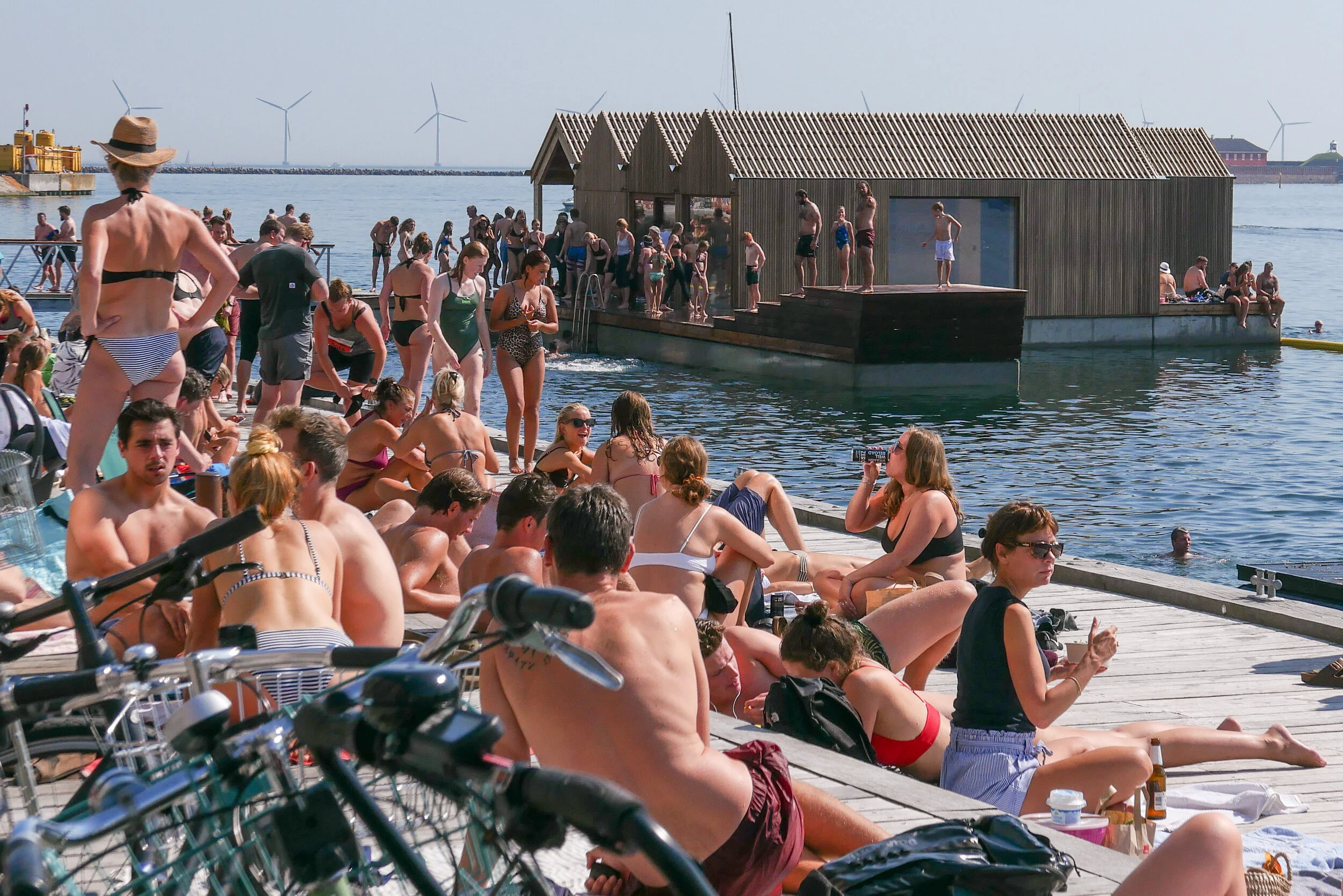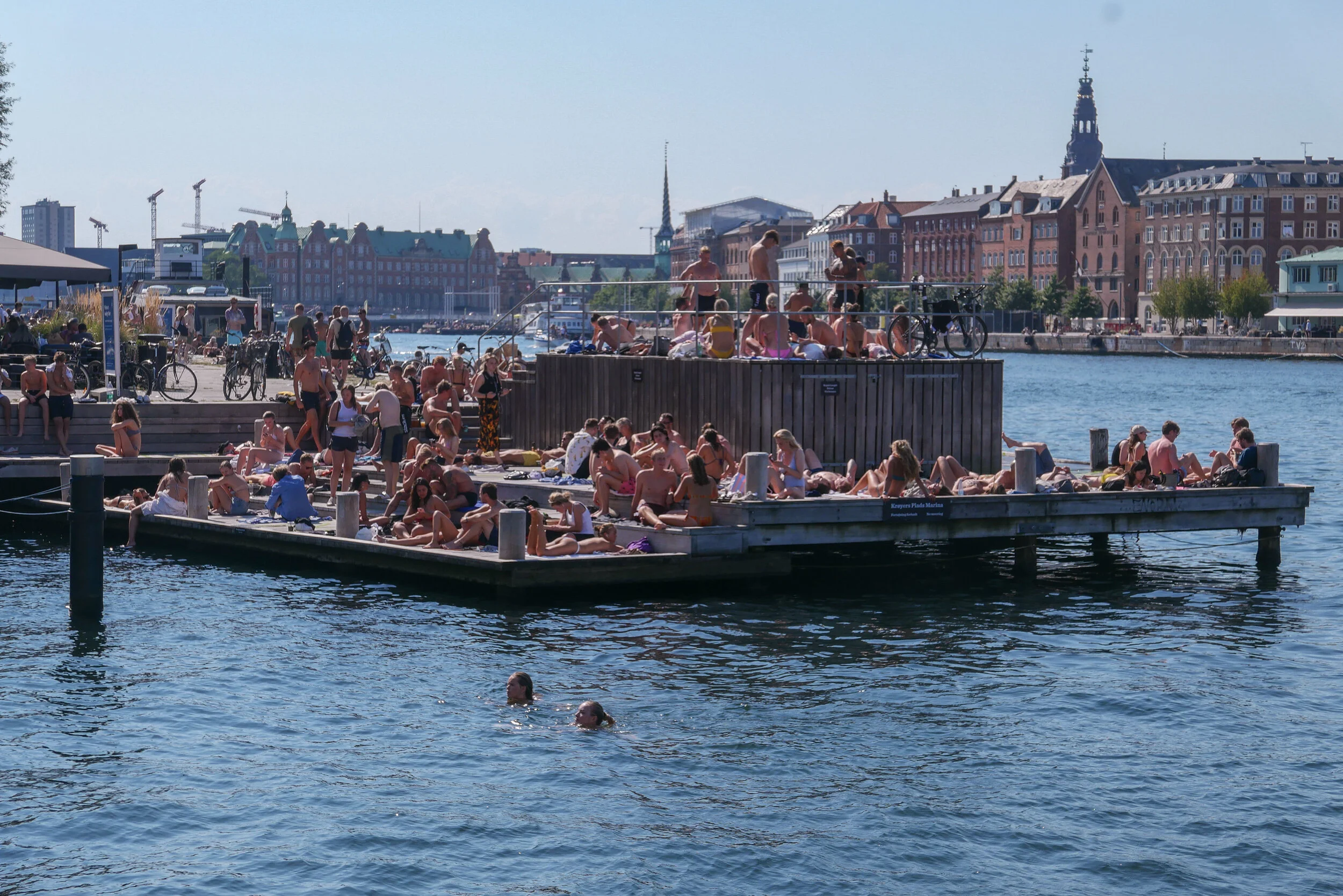swimming in the harbour
/getting into the sea ….. the British way
The herring fishing fleet off Scarborough in 1897 that also shows changing sheds on the beach for swimming. Swimmers got undressed in a shed on wheels that was rolled out into the sea and they then climbed down steps at the front and slipped into the water. After a swim they climbed back in and were rolled back to the beach as they dressed and they hoped no one had seen their ankles
getting into the sea …… the Danish way
Officially, today is the last day of the season for swimming in the harbour.
That's not to mean swimming in the harbour stops today but, from now on and through the Autumn and Winter, there will not be life guards in the main swimming areas and I think daily updates with information about water quality stop.
Of course, people will continue to swim in the harbour if we have some good weather through September and then more hardy citizens will be leaping into the harbour when winter saunas open.
When I moved to the city, I assumed that swimming in the inner harbour was a relatively recent thing … so after commercial shipping declined in the 1950s and 1960s and as cargo ships stopped coming into the inner harbour to load and unload goods.
But then I went to Thorvaldsen Museum and saw the painting of the harbour in the 1840s by Carl Dahl. There, in the foreground, are two men, one sitting on the edge of the quay and the other standing. They are just wearing their shirts and appear to be chatting so presumably undressing before going into the water or getting dressed after a swim.
people in the city must always have swum in the harbour - either to cool off on a hot day or to wash
This painting by Carl Dahl of Larsens Plads in 1840 - now in Thorvaldsens Museum - shows the part of the harbour south of Toldbod that was then timber yards. The two men in just their shirts appear to be chatting while they get dressed after swimming
this photograph shows the harbour in the middle of the 19th century looking north when the naval ship yards were still in the part of the city that is now known as Gammelholm - the triangle-shaped area south of Nyhavn and between Kongens Nytorv and the harbour. The timber yards - on the left - were where the Standard restaurant is now on Havnegade and the warehouse in the middle distance, is now the hotel 71Nyhavn at the entrance into Nyhavn from the main harbour.
According to some accounts, workers from the navy yards swam here and ships were advised to take a wide route further out into the harbour if passengers were worried about seeing naked men.
Looking through histories of the harbour and looking at historic photographs in the city archive it is clear that there has been a long and well-established tradition of swimming in the harbour for fun or for a simple way to wash when water supplies and sewage systems in the crowded old city were, to say the least, iffy and, almost certainly, whiffy.
When the naval dockyard were on the city side of the harbour, between the castle and Nyhavn - in the triangle-shaped area between Kongens Nytorv and the harbour - dockyard workmen swam in the harbour, presumably to cool off or to wash after working. When the naval yards were moved across to Nyholm there was a wood walkway across from the city side to the mole or pier by the mast crane and some maps show bathing places on either side so again it must have been a place where sailors and workmen from the yards could swim and wash.
A photograph in the city archive, taken in the 1860s, shows the part of the inner harbour immediately north of what is now known as Paper Island with what was then a popular swimming area known as the Venice Bathing Institution. The caption points out that the swimming area had been constructed using heavy timbers that were masts from war ships that had been decommissioned and then adds that, "on certain days of the week it was reserved for the city's porn stars" …. what came back when I typed the original Danish sentence, "paa bestemte Dage i Ugen var forbeholdt Byens prostituerede Kvinder" into Google Translate.
In the 1780s, at the opposite end of the harbour, a bath house with separate facilities for men and women was built by the merchant Lars Larsen. It was on the Ryensteens Bastion so was just beyond what was then the south bridge over the harbour from the city side to Chritianshavn.
That enterprise failed but, in May 1825, a major new bathing establishment, opened on the same part of the harbour. Rysensteen Badeanstalt offered, bath rooms for private use; rain showers; a steam room - though just for men - and sulphur baths and they promoted the health benefits of swimming in fresh sea water so the hope must have been to develop the site as a fashionable spa. It survived until 1893.
This was at the end of what is now HC Andersens Boulevard, in the area that is now known as Kalvebod Brygge, so close to the city end of Langebro, the modern road bridge, and close to where there is now a popular public swimming area called Kalvebod Wave that was designed by JDS Architects and opened in 2013.
the south entrance to the harbour in the middle of the 19th century. The narrow wooden bridge over the harbour - Langebro - was on the line of the new pedestrian bridge called Lille Langebro. The wide modern road bridge across the harbour dates from the 1950s and is approximately on the line of the outer bastions shown here. The map shows bathing houses on either side of the old bridge and by 1860 there was a third bath house close to the outer bastion on the Amager side that looked out towards Kallebo Strand and the bay beyond.
Below - Rysensteen Badeanstalt on the bastion at the south end of the city defences. The bathing establishment opened in May 1825 and with a steam room, private bathrooms, rain showers and sulphur baths and with royal patronage, it was hoped that this would develop into a major spa. It closed in 1893.
Some bathing and swimming establishments were linked with more serious fitness and had gyms as well as sea-water swimming. The photograph here shows a pageant or beauty contest for men in 1909 at a gym and bathing establishment at the north edge of the city beyond where the power station at Svanemølle was built in the 1930s.
Photographs of Langebro from the first half of the 20th century show a very large bath house and swimming area on the Amager side of the bridge with wood walk ways built out into the harbour with changing rooms forming four courtyards for separate swimming areas.
Early films show just how popular these swimming areas were. Obviously people were playing to the camera but there are films of people riding their bikes into the swimming pools or throwing people into the harbour dressed in fancy clothes.
There was a large sea-water swimming establishment in the south harbour near to the wharf for the gas works that was clearly very popular with people living in the large working-class area of Vesterbro. There is one account on line with a woman reminiscing about the long summers when she was a girl when she would get up early and swim before school, with a trip to the gym and a swimming lesson during the day and then a third swim of the day after school.


